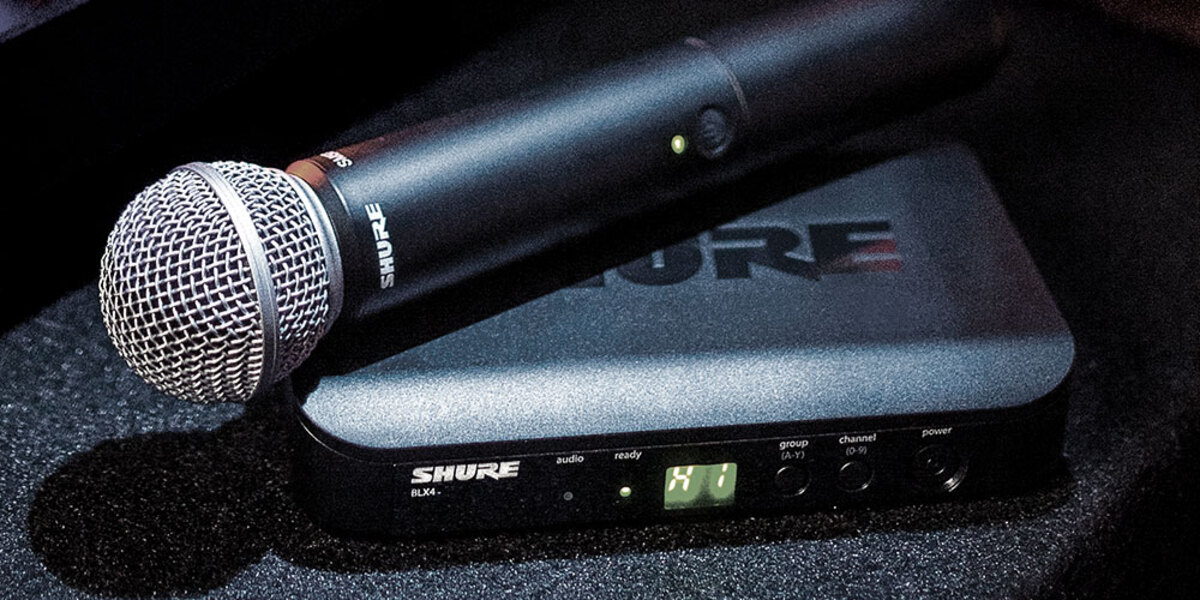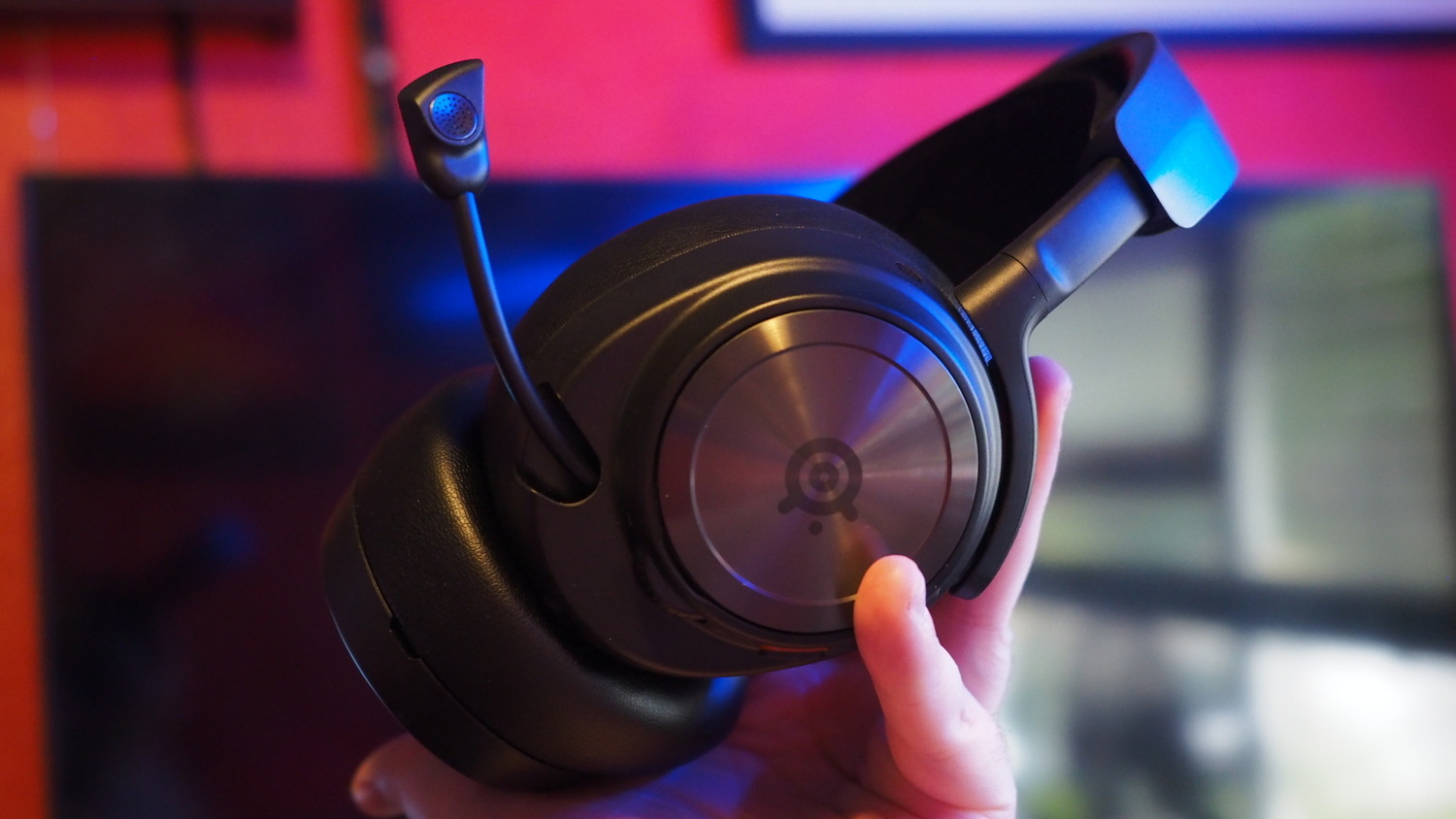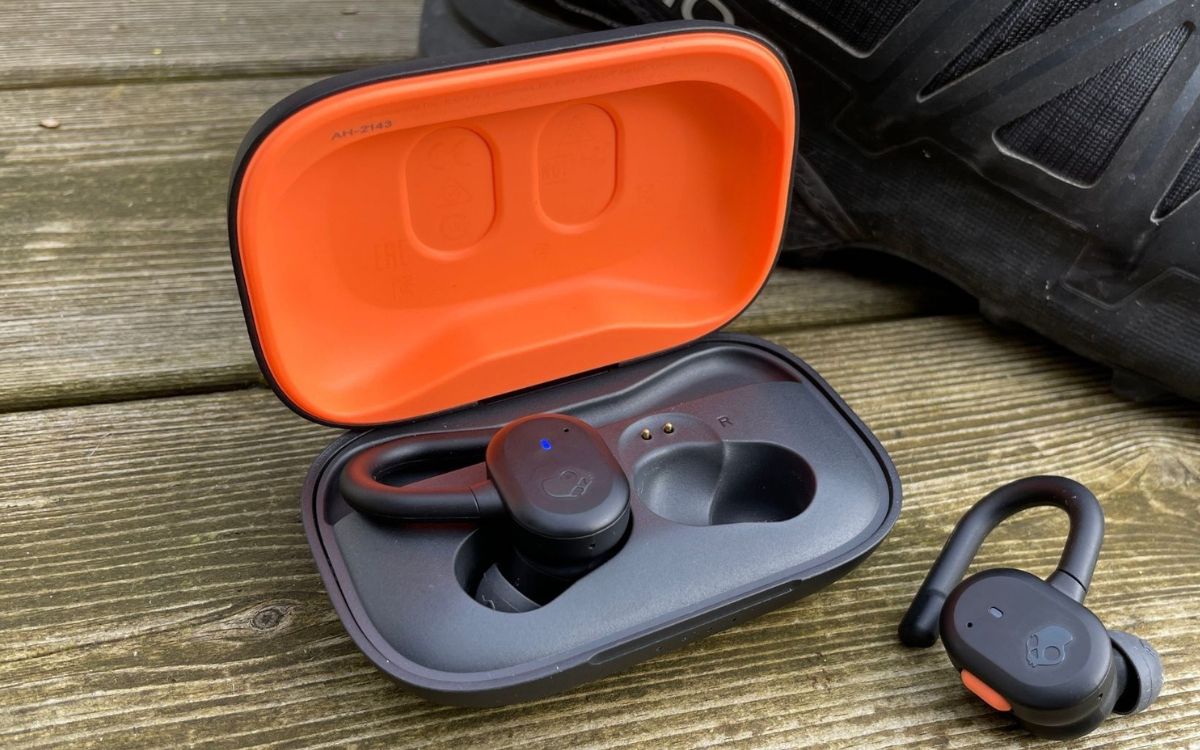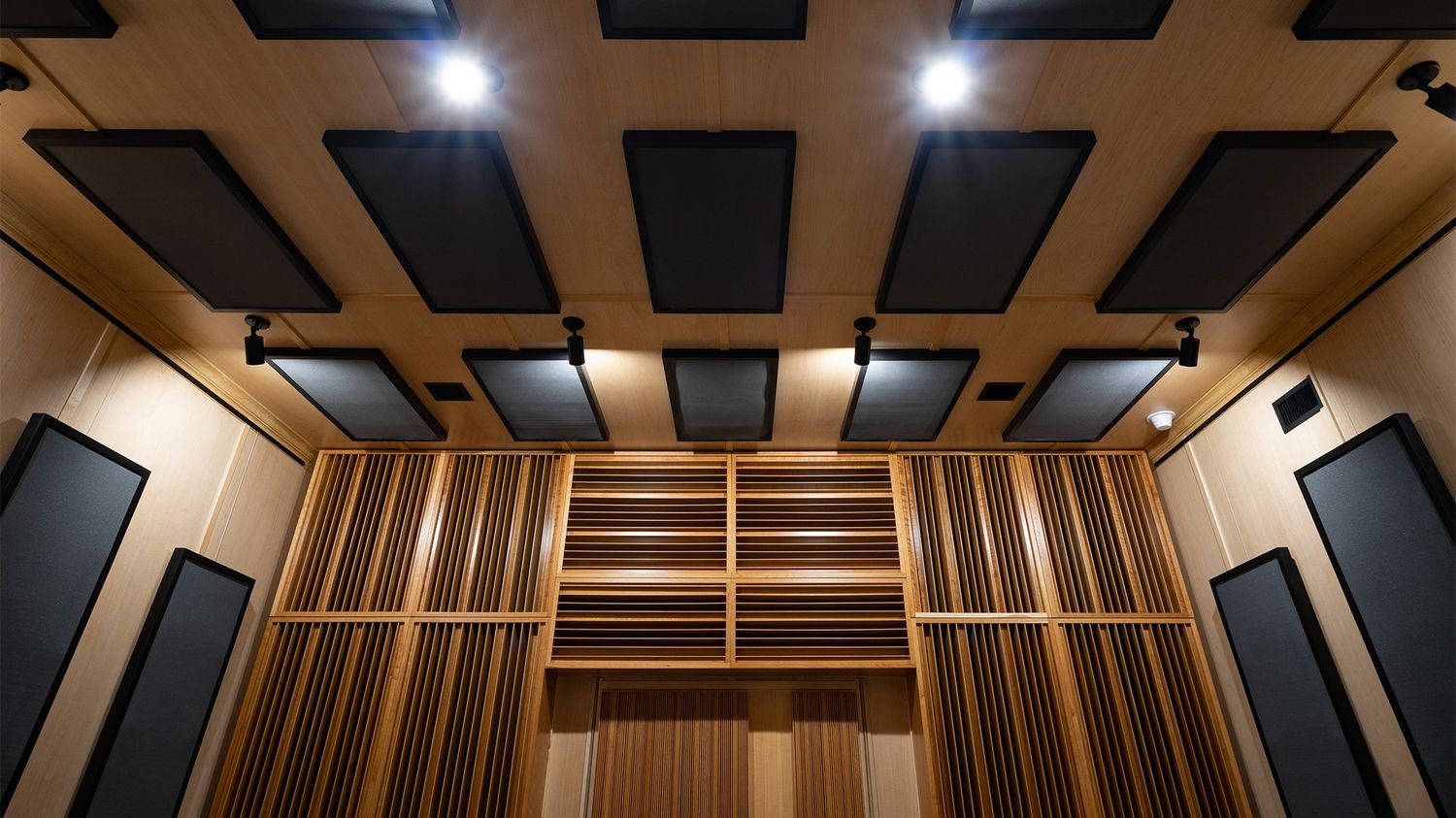Home>Devices & Equipment>Microphone>How Do Wireless Microphone Systems Work


Microphone
How Do Wireless Microphone Systems Work
Published: February 17, 2024
Discover how wireless microphone systems work and the technology behind them. Learn about the benefits and applications of wireless microphones. Gain insights into the operation and components of microphone systems.
(Many of the links in this article redirect to a specific reviewed product. Your purchase of these products through affiliate links helps to generate commission for AudioLover.com, at no extra cost. Learn more)
Table of Contents
- The Fascinating World of Wireless Microphone Systems
- Understanding the Core Principles
- Unveiling the Essential Building Blocks
- Unraveling the Signal Transmission Process
- Navigating the Spectrum of Wireless Audio Transmission
- Exploring Diverse Configurations and Applications
- Weighing the Pros and Cons
- Embracing the Evolution of Audio Communication
Introduction
The Fascinating World of Wireless Microphone Systems
Wireless microphone systems have revolutionized the way we communicate, perform, and entertain. These sophisticated devices have become indispensable in various settings, from live performances and public speaking engagements to fitness instruction and television production. The seamless mobility and flexibility offered by wireless microphone systems have significantly enhanced the overall experience for both performers and audiences. In this comprehensive guide, we will delve into the inner workings of wireless microphone systems, exploring their components, functionality, and the advantages they bring to the table.
The evolution of wireless microphone technology has paved the way for a new era of convenience and mobility in the realm of audio transmission. As we embark on this journey to unravel the intricacies of wireless microphone systems, we will gain a deeper understanding of how these devices operate and the pivotal role they play in modern communication and entertainment.
Join us as we embark on an enlightening exploration of the captivating world of wireless microphone systems, uncovering the mechanisms that enable seamless audio transmission and reception. Whether you are a seasoned audio professional seeking to expand your knowledge or an enthusiast eager to grasp the fundamentals, this guide will provide valuable insights into the marvels of wireless microphone technology.
Basics of Wireless Microphone Systems
Understanding the Core Principles
Wireless microphone systems are designed to liberate performers and presenters from the constraints of traditional wired setups, offering unparalleled freedom of movement without compromising audio quality. At the heart of these systems lies a blend of cutting-edge technology and seamless functionality, allowing for seamless transmission of audio signals over extended distances.
One of the fundamental components of a wireless microphone system is the transmitter, which captures the audio input from the microphone and converts it into a radio frequency (RF) signal for transmission. This RF signal is then relayed to the receiver, which is responsible for capturing and converting the RF signal back into an audio output. The receiver subsequently feeds the audio signal into a sound system or recording device, completing the transmission process.
Understanding the basic elements of wireless microphone systems is essential for grasping their operational dynamics. From handheld and lavalier microphones to headset and instrument transmitters, these systems cater to a diverse array of audio capture needs, empowering users to select the most suitable microphone for their specific application.
Furthermore, the seamless integration of antennas, frequency channels, and signal processing mechanisms ensures that wireless microphone systems deliver consistent and reliable performance, even in dynamic and challenging environments. By embracing the core principles that underpin the functionality of wireless microphone systems, users can harness the full potential of these innovative devices, redefining the boundaries of audio transmission and amplification.
Components of Wireless Microphone Systems
Unveiling the Essential Building Blocks
Wireless microphone systems comprise a range of essential components that work in harmony to facilitate seamless audio transmission and reception. Understanding the functionality of each constituent part is pivotal in comprehending the inner workings of these sophisticated systems.
Microphone Transmitter: At the core of a wireless microphone system lies the microphone transmitter, which serves as the starting point for capturing audio signals. This transmitter is designed to convert the audio input from the microphone into a radio frequency (RF) signal, enabling wireless transmission to the receiver.
Receiver: The receiver acts as the counterpart to the transmitter, capturing the RF signal and converting it back into an audio output. This pivotal component serves as the bridge between the wireless microphone system and the sound system or recording device, ensuring that the transmitted audio signal is seamlessly integrated into the audio setup.
Microphone Options: Wireless microphone systems offer a diverse array of microphone options, including handheld, lavalier, headset, and instrument transmitters. Each type of microphone is tailored to specific use cases, catering to the unique audio capture requirements of performers, presenters, and instrumentalists.
Antennas: Antennas play a crucial role in wireless microphone systems, facilitating the transmission and reception of RF signals. These components are strategically positioned to optimize signal strength and minimize interference, ensuring robust and reliable wireless connectivity.
Frequency Channels: Wireless microphone systems operate across designated frequency channels, allowing users to select the most suitable channel for their specific environment. This flexibility enables multiple wireless systems to coexist harmoniously without signal interference, making frequency management a critical aspect of wireless microphone operation.
By familiarizing ourselves with the fundamental components of wireless microphone systems, we gain a deeper appreciation for the intricate interplay of technology and functionality that defines these innovative audio transmission solutions.
How Wireless Microphone Systems Transmit and Receive Signals
Unraveling the Signal Transmission Process
Wireless microphone systems employ a sophisticated process to transmit and receive audio signals, leveraging advanced technology to ensure seamless and reliable communication. Understanding the intricacies of this signal transmission mechanism is essential for appreciating the seamless mobility and flexibility offered by wireless microphone systems.
Transmitter Operation: The journey of an audio signal within a wireless microphone system commences with the microphone transmitter. Upon capturing the audio input, the transmitter converts the analog signal into a digital format, facilitating efficient modulation for transmission. This modulated signal is then transmitted wirelessly via radio frequency (RF) waves, enabling it to traverse distances without the constraints of physical cables.
Receiver Functionality: On the receiving end, the wireless microphone system’s receiver plays a pivotal role in capturing the transmitted RF signal. Once the RF signal is captured, the receiver demodulates the signal, converting it back into an analog audio output that can be seamlessly integrated into the audio setup. This process ensures that the transmitted audio signal is faithfully reproduced, upholding the integrity of the original audio input.
Signal Processing: The captured audio signal undergoes meticulous processing within the receiver, where it is refined and optimized to maintain clarity and fidelity. This processing phase encompasses noise reduction, signal amplification, and frequency tuning, culminating in the delivery of a pristine audio output that faithfully represents the original source.
Antenna Optimization: Antennas play a crucial role in ensuring robust signal transmission and reception within wireless microphone systems. By strategically positioning antennas and optimizing their orientation, users can mitigate signal interference and enhance signal strength, thereby fostering a seamless and uninterrupted audio transmission experience.
By unraveling the intricate process through which wireless microphone systems transmit and receive signals, we gain a profound understanding of the technological prowess that underpins their seamless functionality. This insight into signal transmission mechanisms empowers users to harness the full potential of wireless microphone systems, unlocking a world of boundless creativity and mobility in audio communication.
Frequency Bands and Interference
Navigating the Spectrum of Wireless Audio Transmission
Wireless microphone systems operate within designated frequency bands, each offering unique advantages and considerations in the realm of audio transmission. Understanding the intricacies of frequency bands and the potential for interference is crucial for optimizing the performance and reliability of wireless microphone systems.
Frequency Bands: Wireless microphone systems typically operate within specific frequency bands allocated by regulatory authorities. These bands encompass a range of frequencies within the radio spectrum, providing users with diverse options for wireless audio transmission. Common frequency bands for wireless microphones include VHF (Very High Frequency), UHF (Ultra High Frequency), and 2.4 GHz bands, each offering distinct characteristics in terms of signal range, penetration, and interference resistance.
Interference Challenges: The proliferation of wireless devices and the ever-expanding landscape of electromagnetic signals present potential challenges in the form of signal interference. Interference can arise from various sources, including competing wireless systems, electronic devices, and environmental factors. Mitigating interference is paramount in ensuring the seamless operation of wireless microphone systems, necessitating strategic frequency selection, antenna positioning, and interference detection mechanisms.
Frequency Coordination: Effective frequency coordination is essential for managing multiple wireless microphone systems operating within the same vicinity. By strategically assigning frequency channels to individual systems and ensuring minimal overlap, users can mitigate the risk of signal interference and optimize the coexistence of multiple wireless devices in a shared environment.
Intermodulation: Intermodulation interference, stemming from the interaction of multiple frequencies within a wireless system, poses a potential challenge in densely populated frequency environments. Understanding and mitigating intermodulation effects through meticulous frequency planning and signal management is pivotal in preserving the integrity and reliability of wireless microphone transmissions.
By navigating the intricate landscape of frequency bands and proactively addressing the specter of interference, users can harness the full potential of wireless microphone systems, ensuring robust and uninterrupted audio transmission across diverse environments and applications.
Types of Wireless Microphone Systems
Exploring Diverse Configurations and Applications
Wireless microphone systems encompass a diverse array of configurations tailored to meet the unique needs of performers, presenters, and audio professionals across various domains. From handheld and lavalier systems to advanced digital solutions, the realm of wireless microphone technology offers a rich tapestry of options designed to cater to specific applications and user preferences.
Handheld Wireless Systems: Handheld wireless microphone systems feature a microphone transmitter integrated into the microphone itself, providing performers and presenters with the freedom to move and interact without the constraints of cables. These systems are ideal for live performances, public speaking engagements, and vocal presentations, offering seamless mobility and uncompromising audio quality.
Lavalier and Headset Systems: Lavalier and headset wireless microphone systems are designed for discreet and hands-free audio capture, making them well-suited for presenters, fitness instructors, and performers who require unobtrusive yet reliable microphone solutions. These systems offer exceptional versatility and are widely utilized in broadcast, theater, and corporate settings.
Instrument Wireless Systems: Instrument wireless microphone systems cater to the unique audio capture needs of instrumentalists, allowing for the wireless transmission of instrument signals to amplification and recording systems. These systems are popular among musicians, stage performers, and recording artists, offering enhanced mobility and flexibility during live performances and studio sessions.
Digital Wireless Systems: Advanced digital wireless microphone systems leverage cutting-edge technology to deliver pristine audio quality, robust signal transmission, and enhanced interference resistance. These systems often incorporate features such as encryption, automatic frequency management, and seamless channel scanning, making them ideal for professional audio applications where reliability and performance are paramount.
By exploring the diverse types of wireless microphone systems available, users can identify the most suitable configuration for their specific requirements, unlocking a world of creative possibilities and seamless audio communication across an array of dynamic and demanding environments.
Advantages and Disadvantages of Wireless Microphone Systems
Weighing the Pros and Cons
Wireless microphone systems offer a myriad of benefits, empowering users with unparalleled mobility, flexibility, and convenience in audio communication. However, alongside their numerous advantages, these systems also present certain limitations and considerations that warrant careful assessment.
Advantages:
- Freedom of Movement: Wireless microphone systems liberate performers, presenters, and instrumentalists from the constraints of traditional wired setups, enabling seamless movement and interaction on stage or in dynamic environments.
- Enhanced Flexibility: The wireless nature of these systems allows for effortless setup and configuration, facilitating rapid deployment and adaptability across diverse performance and presentation scenarios.
- Reduced Cable Clutter: By eliminating the need for extensive cable runs, wireless microphone systems contribute to a cleaner and more organized stage or presentation area, minimizing tripping hazards and visual distractions.
- Improved Audience Engagement: Performers and presenters can engage with their audience more intimately, fostering a stronger connection and delivering impactful performances without being tethered to a stationary microphone.
- Seamless Integration: Wireless microphone systems seamlessly integrate with sound systems, recording devices, and audio processing equipment, offering a cohesive and efficient audio transmission solution.
Disadvantages:
- Cost Considerations: Wireless microphone systems can entail a higher initial investment compared to their wired counterparts, necessitating careful budgetary planning and assessment of long-term value.
- Interference Challenges: The potential for signal interference from other wireless devices, electronic equipment, and environmental factors requires meticulous frequency management and antenna positioning to ensure reliable performance.
- Battery Dependency: Wireless microphone systems rely on battery power for operation, necessitating proactive battery management to prevent interruptions during performances or presentations.
- Complexity of Operation: Advanced wireless systems may entail a steeper learning curve for setup, configuration, and frequency coordination, requiring users to familiarize themselves with the nuances of wireless audio technology.
- Regulatory Compliance: Users must adhere to regulatory guidelines and spectrum licensing requirements when operating wireless microphone systems, ensuring legal and ethical use of wireless frequencies.
By carefully weighing the advantages and disadvantages of wireless microphone systems, users can make informed decisions regarding their suitability for specific applications, thereby maximizing the benefits while proactively addressing potential challenges.
Conclusion
Embracing the Evolution of Audio Communication
As we conclude our exploration of wireless microphone systems, we are reminded of the transformative impact these innovative technologies have had on the landscape of audio communication and performance. From empowering performers with unprecedented freedom of movement to enhancing the immersive experience for audiences, wireless microphone systems have redefined the boundaries of audio transmission and amplification.
By delving into the fundamental principles, components, and operational dynamics of wireless microphone systems, we have gained a profound understanding of the intricate interplay of technology and functionality that underpins their seamless operation. The diverse types of wireless microphone configurations, ranging from handheld and lavalier systems to advanced digital solutions, offer a rich tapestry of options tailored to meet the unique needs of performers, presenters, and audio professionals across diverse domains.
While wireless microphone systems offer an array of advantages, including freedom of movement, enhanced flexibility, and seamless integration, they also present considerations such as cost, interference challenges, and regulatory compliance. By carefully evaluating these factors, users can harness the full potential of wireless microphone systems while proactively addressing potential limitations.
As we embrace the evolution of audio communication and performance, it is essential to approach the adoption and utilization of wireless microphone systems with a blend of creativity, technical acumen, and strategic planning. By leveraging the myriad benefits of wireless microphone technology while navigating potential challenges with foresight and expertise, users can unlock a world of boundless creativity and mobility in audio communication, enriching the experiences of performers, presenters, and audiences alike.
In essence, wireless microphone systems stand as a testament to the relentless pursuit of innovation and the enduring quest to elevate the art of audio communication, paving the way for captivating performances, impactful presentations, and seamless connectivity in an ever-evolving world.











